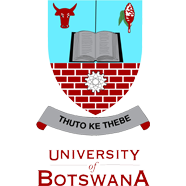Analysing discourse: an investigation of the response move (R-move) in communication and study skills (CSS) classes

View/
Date
2018-11-21Author
Galegane, Golebamang
Publisher
University of Botswana, www.ub.ac.bwType
Published articleMetadata
Show full item recordAbstract
This paper explores the Response move in Communication and Study Skills (CSS) classes of the University of Botswana (UB). It aims to find out how the students’ responses in the classroom contributed to quality classroom talk. The mixed methods approach was used and two research instruments were used for collecting data for this research article. The said instruments were systematic observations and classroom observations. The checklist of items from the systematic observations was used to allow for the quantitative aspect of the study. On the other hand, the discourse gathered during the classroom observations was used for the qualitative aspect of the study. Nine (9) CSS lesson extracts obtained from the classroom and systematic observations were used to analyse the classroom discourse. The said two research instruments were used to obtain and triangulate information relating to the use of the Response Move (R-Move) in CSS classes. The findings revealed that the CSS lecturers preferred the students to respond to the questions posed in class individually as opposed to choral ones. Another note-worthy experience revealed by the findings, though minimal, was that the students also had some questions which were responded to by their lecturers. The findings from this paper are valuable to both literature and practice. This is because they consider the use of the R-move in higher learning. Additionally, the findings might serve as a teaching “lense” to practitioners in all academic contexts.
Collections
- OJS imports [361]
